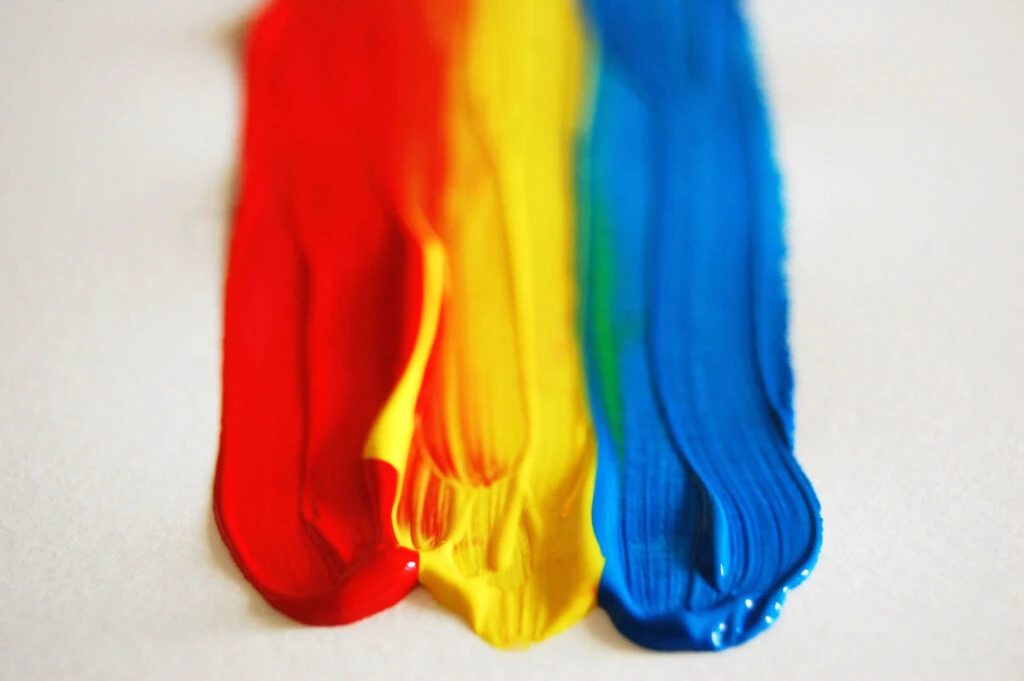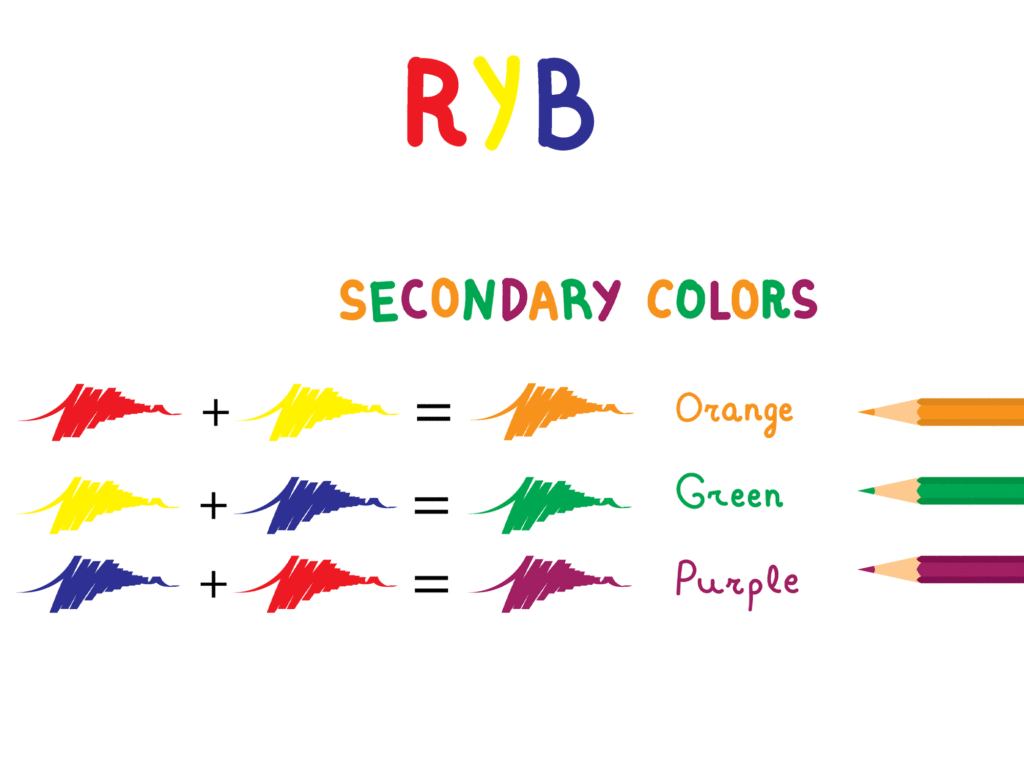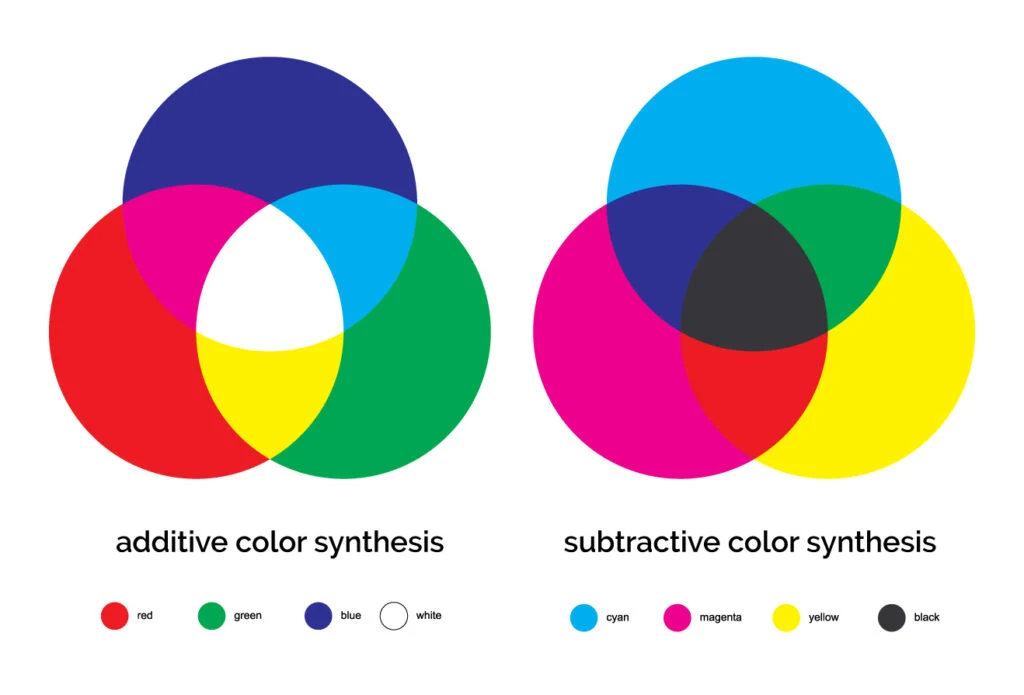Here’s everything you need to know about secondary colors.
After learning about primary colors, the next step is to understand secondary colors.
In this post, we’ll explain how color theory applies to secondary colors, how secondary colors relate to the other types of colors on the color wheel, and answer the question, “what are the secondary colors?”
Understanding secondary colors will help you develop a firmer grasp of color, no matter what industry you’re working with color in.

Color Theory
Color theory is the creative and scientific study of color. It’s a logic we can use to talk about color and create guidelines for using it effectively. This makes it easier to work with the whole rainbow and find colors that flatter each other.
In terms of color theory, secondary colors are the next level of complexity after primary colors. This gives you more tools in your color toolbox – or more room to play if you prefer to think of it that way.
Primary and Tertiary Colors
To understand secondary colors, first, we need to talk about primary and tertiary colors.
Primary Colors
Primary colors are the pure hues (the only colors that cannot be created by mixing other colors together).
In painting, the primary colors are red, yellow, and blue.
When mixing light (like on a computer screen), the primary colors are red, green, and blue.
When mixing pigments (like when using a printer), the primary colors are cyan, magenta, yellow, and key (black).

Tertiary Colors
Tertiary colors are made by mixing equal parts of one primary color and one secondary color.
When working with light (the RGB color wheel), the tertiary colors are rose, violet, azure, aquamarine, chartreuse, and orange. The same logic applies to the CMYK color wheel.
In painting (the RYB color wheel created by Isaac Newton who mapped the color spectrum onto a circle), tertiary colors are made by mixing equal parts of two secondary colors.
In this case, the tertiary colors are slate, olive, and brown, and the colors you see on the color wheel between the primaries and secondaries are called intermediate colors.
Secondary Colors
Secondary colors are made by mixing equal parts of two primary colors. They’re called secondary colors because they’re more closely related to the primary colors than any other set of colors – they’re derived directly and exclusively from the primary colors.
Beyond that, secondary colors are easy to find on the color wheel; they’re equidistant between the primary colors.
Secondary Colors on the RYB Color Model (Painting)
- Orange
- Purple
- Green
Interestingly, for each of the three secondary colors, the complementary color is the one primary color that was not used to create it. So the complementary color of orange is blue, purple is yellow, and green is red.

Secondary Colors on the RGB Color Model (Light)
- Cyan
- Magenta
- Yellow

Secondary Colors on the CMYK Color Model (Pigments and Printing)
- Red
- Green
- Blue

Additive and Subtractive Colors
What are Additive Colors?
The RGB color model is additive. This means it creates new colors by adding and mixing light together.
This creates brighter combinations than subtractive colors, which we’ll discuss below. When you combine all the colors in equal amounts in an additive color model, you get white.
What are Subtractive Colors?
The RYB (painting) and CMYK (pigment) color models are subtractive. They display color by absorbing certain wavelengths of light and reflecting the rest.
Combining pigments causes them to absorb a combination of colors and to reflect a smaller range of color. This results in a darker color.
Because each color wheel has different primary hues, they also have different secondary colors. When working on any project, remember to use the correct color model.

Is Orange a Secondary Color?
In RYB and RGB, yes, orange is a secondary color. However, the same does not apply to the CMYK color model.
Is Green a Secondary Color?
In RYB and CMYK, yes, green is a secondary color. However, green is a primary color in the RGB color model.
Also, unlike popular belief, green –and pretty much any color– can be a warm color or a cool color. It only depends on the undertone.
Is Purple a Secondary Color?
In RYB, yes, purple is a secondary color.
Is Yellow a Secondary Color?
In RGB, yes, yellow is a secondary color. However, yellow is a primary color in the CMYK and RYB color models.
Did you enjoy reading about the secondary colors? Then share it with a friend who might find this article interesting too!
